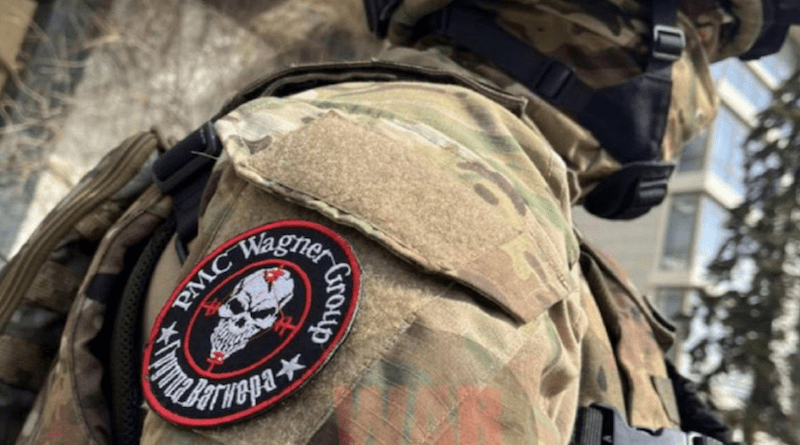Israel’s War Grows: Russia’s Infamous Wagner Group Backs Hezbollah – OpEd
By Dave Patterson
The infamous Wagner Group, a private military company from Russia, has become Vladimir Putin’s proxy in Lebanon and an open threat to Israel. The mercenary force, which has been ubiquitous in failed and conflict-ridden nations, has now directly inserted itself in what was originally a war between Israel and Hamas. Reports are that the Wagner Group is providing enhanced air defense to Hezbollah fighters as they attack Israel from the north, protecting the Iran-backed terrorist group’s assaults on Israeli towns and villages.
Wagner Group Has Become Russia’s Proxy Against Israel
After the failed Wagner Group rebellion in June, the Russian Ministry of Defense exercised more direct command and control of the paramilitary organization. With the closer supervision of Wagner, Putin has a more difficult time claiming deniability for the actions of his mercenaries. A recent article in The Wall Street Journal reported a clear link between Russia, its Wagner proxy, and a direct intervention in assisting Hezbollah. Michael R. Gordon and Vivian Salama explained:
“Wagner Group, the Russian paramilitary organization, plans to provide an air-defense system to Hezbollah, the Lebanese militia, US officials say, citing intelligence…The Russian SA-22 system they plan to send uses antiaircraft missiles and air-defense guns to intercept aircraft…One US official said that Washington hasn’t confirmed that the system has been sent. But officials are monitoring discussions involving Wagner and Hezbollah, and officials say the potential delivery is a major concern.”
The positioning of an advanced air defense system like the SA-22 would be a significant challenge for Israeli attack aircraft. Hezbollah gaining the ability to engage IDF jet fighter bombers more effectively makes defending northern Israel more difficult and increases the importance of what is called “suppression of enemy air defenses,” or SEAD for short. To attack a Hezbollah terrorist target, the IDF would have to allocate more fighter assets to SEAD missions before an air-to-ground attack by jets, like F-16s, F-15s, and F-35s. Additionally, unmanned aerial vehicles carrying out intelligence, surveillance, and reconnaissance (ISR) missions over Hezbollah fighting positions would be in far greater jeopardy.
If it happens, the employment of more effective air defense will provide Hezbollah with greater opportunity for ground assaults over the northern border with Lebanon. The SA-22, also known as the Pantsir S-1, is a frontline weapon possessed by several militaries, including Algeria, Libya, Oman, Iran, Syria, and Iraq, according to the Center for Strategic and International Studies (CSIS) Missile Defense Project. The SA-22 surface-to-air antiaircraft missile system is a mobile, self-propelled system with up to twelve missile launching tubes and two 30mm automatic cannons, “allowing it to engage four targets simultaneously,” CSIS reported.
The missile and gun assembly are on a swivel mount that uses radar to acquire and track airborne tactical aircraft, precision-guided munitions, and drones. Once a target aircraft is identified, the missile can be guided to that target by radar or heat signatures. Once locked on the target aircraft, the SS-22 “can track up to 20 tactical aircraft-sized targets at a range of 32-36 km (19.9 mi-36.6 mi),” CSIS explained. The evacuation zone for Israeli towns and villages is approximately three miles from the Lebanon border. Consequently, attacking Israeli aircraft can be seen well before crossing into Lebanon to take out Hezbollah fighters.
Still a Formidable Threat
As is the case with most advanced systems, Wagner Group cannot just roll up with the missile system and hand it off to Hezbollah terrorists and say, “Here you go, have at it.” Weapons that rely on sophisticated electronics and mechanical subassemblies require operating training and maintenance support. Additionally, to be useful in the hands of militants in southern Lebanon, the antiaircraft missile systems require a supply chain of spare parts. Because the missile system requires radar for detection, the radar signature makes the weapon easy prey for anti-radiation missiles that will home in on the radar signal. Nonetheless, the SA-22 in the hands of Hezbollah raises the threat level for the Israelis.
But the fight goes on, and Israel can anticipate Russia providing Iran-backed Hezbollah militants additional weapons and enhanced capability by way of the Wagner Group. “Lebanese Hezbollah (LH) and other Iranian-backed militants resumed cross-border attacks in northern Israel on November 4 at their normal rate after a lull the previous day,” the Institute for the Study of War reported in its “Iran Update, November 4, 2023.” The Hezbollah terrorists announced that they had conducted eight attacks. The LH leader, Hassan Nasrallah, said during a November 3 speech that the implied purpose of the Hezbollah attacks into Israel is to divert the attention the IDF can apply to destroying Hamas. So far, that hasn’t happened. Hezbollah having SA-22 systems will be a challenge for Israel, but not one the IDF can’t handle.
The views expressed are those of the author and not of any other affiliation.
About the author: National Security Correspondent at LibertyNation.Com. Dave is a retired U.S. Air Force Pilot with over 180 combat missions in Vietnam. He is the former Principal Deputy Under Secretary of Defense, Comptroller and has served in executive positions in the private sector aerospace and defense industry. In addition to Liberty Nation, Dave’s articles have appeared in The Federalist and DefenseOne.com.
Source: This article was published by Liberty Nation

